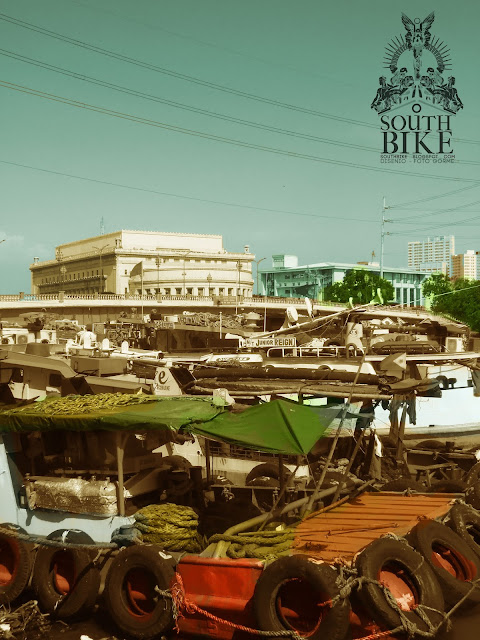 |
| Our Lady of Candelaria Parish Church, Silang, Cavite, built from 1637-1639 |
Unlike most of the cities and towns that border the ever-expanding Manila-centred metropolis, Silang manages to maintain its personality, with its soul still intact. The town center, although filled with a lot of cars (even the town plaza dedicated to Jose Rizal, one of the country's national heroes, was slowly becoming a parking lot) still has the feel of its "oldness." On one side of the town center stands the Parish of Our Lady of Candelaria. A typical baroque church, the stone church was built by Juan De Salazar, a Jesuit, from 1637-1639 and was dedicated to the Our Lady of Candelaria in 1640. The church also became the headquarters of the Civil Guard of the Spanish forces after being driven away by revolutionaries under Gen. Vito Belarmino from the 5th to the 6th of September 1896.
 |
| The Retablo Mayor (Main Altar) |
The church has three Rococo-style altars built from 16443 to 1663; one main altar which houses the image of the town's patroness and depicts scenes from the life of the Virgin Mary. The other two side altars are dedicated to martyrs, women saints, and saints from the New Testament (Left) and Jesuit saints (Right).
 |
| Detail of the right side altar, bottom center mural featuring Saint Teresa of Avila |
 |
| The Left Side Altar |
According to local tradition, the image of the lady of Candelaria was found inside a box in the mountains of Silang in 1640 by an indio named Andres. He then gave it to another indio when that said indio was awestruck by the magnificent beauty of the image of the Virgin Mary. A tabernacle was built for the virgin.
Years after, Andres returned only to find to his great dismay and horror that the tabernacle no longer held the image of the Virgin Mary. After seeking forgiveness, he then went on to look for the image and found it. The image disappeared again for nine times for the next few years until the Jesuit rector advised the town people to make a vigil and to bring the image back to the church in a festive mood, a practice that still lives on as part of the town's tradition in honoring their patroness every February 1-3 as part of the feast day of the Lady of Candelaria and her "enthronement" in the altar of the town's parish.
 |
| Rizal Monument |
On the other side of the plaza and right beside the Church entrance is the town's municipal hall and the plaza and monument erected and dedicated to the memory of Jose Rizal, one of the national heroes of the country, a common practice during the American Period when each town sported plazas and monuments dedicated to local heroes, with a large number of them dedicated to Rizal.
Facing the church are some old houses, a reminder of Silang's age, and a silent guard to the onward processional march of time.
 |
| One of the old houses in Silang |
The roots of Silang are traced by tradition to the time when ten Bornean datus migrated northward on board balangays and ended in Silang though Taal Lake, which was then connected to waters of Manila Bay. Its first settlers were Gat Hingiw, his wife Gat Kaliwanag and their seven children. Their children moved to different places of the town and established their respective barangays. Gat Pandan stayed in the community and developed the area.
During the start of the Spanish colonization in the Philippines, tracts of land were given by the monarch of Spain to the Spanish conquistadores and their descendants who collected tributes from the people residing in their acquired lands. Silang originally belonged to the encomienda (land grant) of Diego Jorge de Villalobos. His Silang territory extended to what is today the towns of Carmona, Amadeo, Indang, Alfonso, General Trias and Tanza.
The Silang territory was later purchased from King Ferdinand VI of Spain for 2,000 pesetas on March 9, 1746 to prevent it from becoming a "friar land" like the other towns of Cavite, executed through the representation of Bernabe Javier Manahan and Gervacio dela Cruz. From then on, Silang was governed by gobernadorcillos, Capitan Municipals, Presidente Municipal, and then Municipal Mayors.
Silang now lies as a sleepy town slowly being awakened by the ever growing reaches of "development", but it could sleep for a little bit more in the cold breeze of the mountains nearby as its people still continue on with the old ways of farming, not wanting to surrender to the calls of industrialization.
SOUTH BIKE is open to your comments, suggestions, corrections, and other related material.
SOUTH BIKE owns all rights to pictures, videos, and other related media published on this blog unless stated otherwise.











